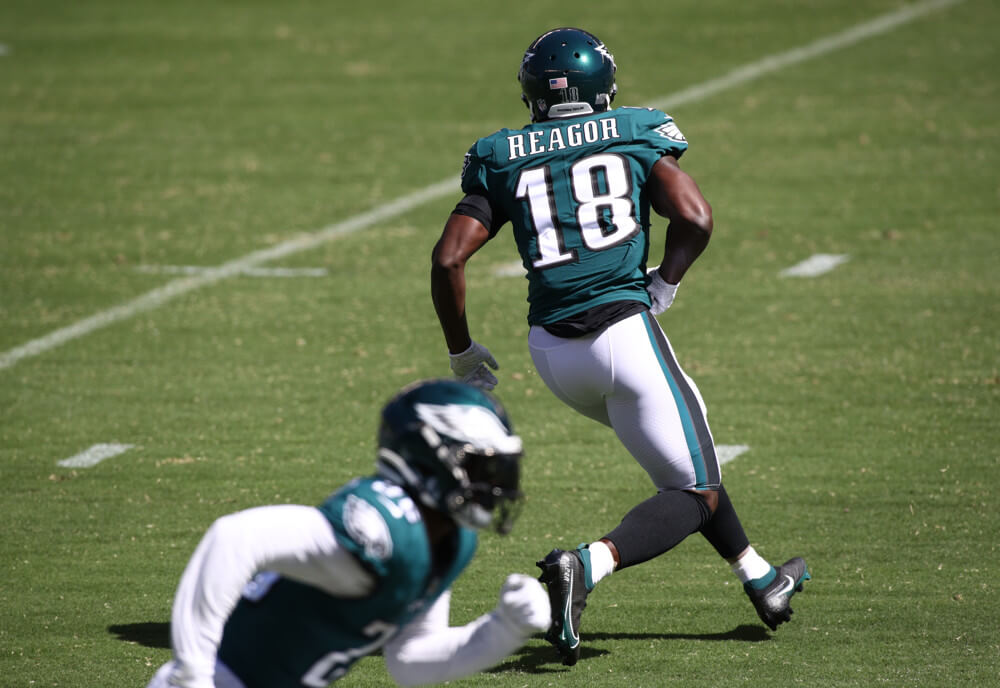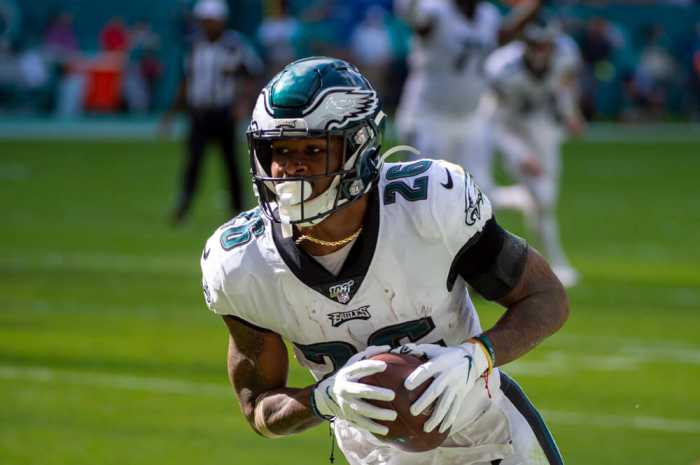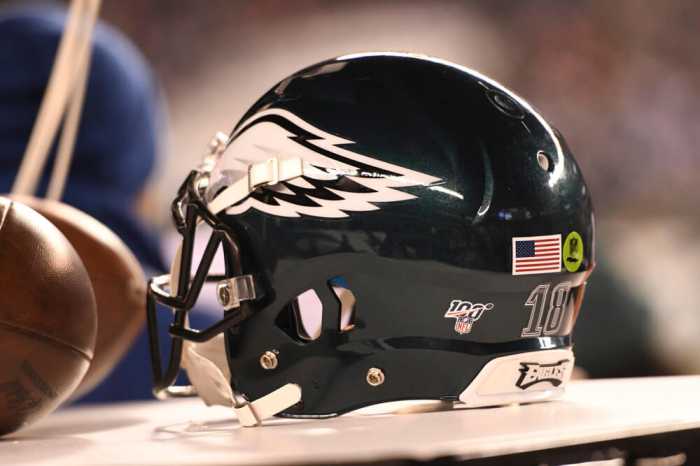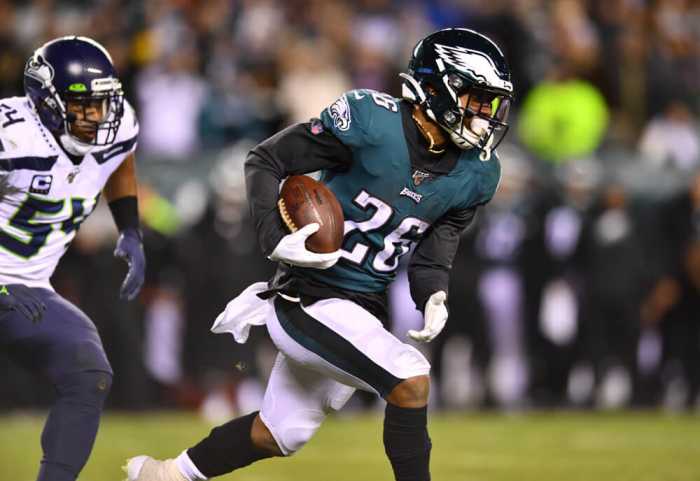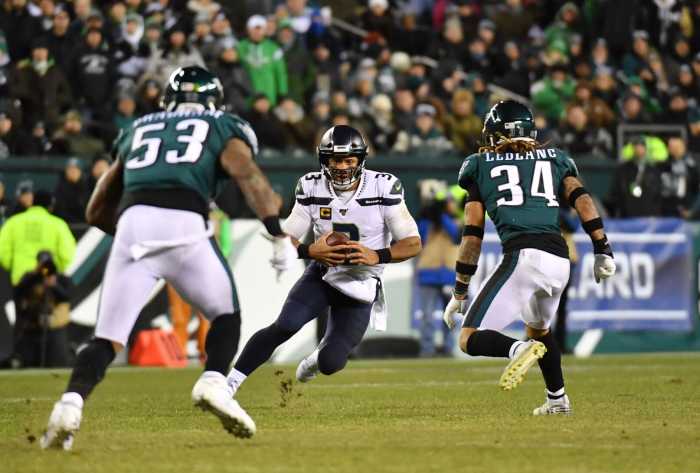After the curtains closed on the NFL Draft, Eagles fans were left purring. Three shiny new wideouts had been drafted and all of them had game-breaking speed. However, their rookie campaigns had all been fairly underwhelming up until around 2 weeks ago. After dismal starts, drops, and a lack of snaps, we’re finally getting to see what the rooks can do.
TCU’s Jalen Reagor was drafted in the first-round, before John Hightower and Quez Watkins became set to join him in Philadelphia on day 3. This was the type of haul fans were begging for. Carson Wentz would have more speed than he knew what to do with, forcing defenses to account for the deep-threat and opening up the field underneath for guys like Miles Sanders and Dallas Goedert.
A shortened offseason meant that progress would understandably be slower than usual. No preseason, no OTA’s, and a shortened training camp would obviously make things difficult for the wideouts who were less-polished, and Jalen Reagor would suffer a minor training camp knock in the way of an arm injury.
After a few flashes in the opening games, it was clear that he wasn’t on the same page as his quarterback. Wentz missed a couple of guaranteed touchdowns and Reagor struggled to get going. He then suffered a thumb injury that would keep him out of action for over a month.
In his absence, many were excited to see the emergence of John Hightower, a Boise State product who had buckets of potential as someone who is so much more than his speedy reputation suggests. With no DeSean Jackson or Jalen Reagor, the stage was set. His season would also suffer a bumpy start though, with drops and missed throws haunting him every week despite showcasing an ability to get open.
As for Quez Watkins, he started the year on IR with an upper-body injury and missed three games. His usage since being activated was minimal. He failed to draw Wentz’s attention on 15 snaps against the Ravens and had been downgraded to a healthy scratch ever since amidst other minor injury concerns.
Between the three Eagles receivers, just 296 yards had been amassed from week 1 through to the Green Bay game in week 13.
The wildcard here was Tavis Fulgham. A former sixth-round draft pick built identically to J.J Arcega-Whiteside from the same class, he was poached amidst the roster cutdown period and from his activation in week 4 through to week 8, he led the NFL in receiving. Fulgham amassed 467 yards up to the Packers game, but after a four-game streak of 70+ receiving yards, he amassed just 32 over the next 3.
Alshon Jeffery’s return to health ate into his snap counts and an already dysfunctional offense started to fall apart. Fulgham’s targets slowly dropped off the face of the Earth, he was unable to make the heroic catches he previously had been, and his overall usage dipped massively.
With the offense falling to pieces and their NFC East title hopes dangling by a thread, the Eagles made a huge change. Midway through the Green Bay Packers game, Carson Wentz was pulled in favor of rookie QB Jalen Hurts.
In his first start against New Orleans, Hurts razzled and dazzled on the ground, bringing a totally new element to the offense. It wasn’t just the QB change that sparked the offense, though.
Doug Pederson appeared to change-up his play-calling, which is something that was long overdue. All of a sudden, Jalen Reagor was being used on end-arounds and in plays designed to let him work in open space as opposed to just get deep.
Fast forward one week later and 22-year-old Quez Watkins, who previously didn’t even have an NFL target, exploded for a screen that went 32-yards and to the house, spinning off of oncoming defenders before setting the field alight.
Travis Fulgham caught both of his targets for a combined total of 30 yards and Jalen Reagor now has 46+ in each of his last two games along with at least one rushing attempt.
“I like the group. I like their athleticism, I like their enthusiasm, I like their work ethic during the week.” Doug Pederson said on Monday. “The sky’s the limit. You talk about the quarterback, the sky’s the limit with these guys, I think. The more they play and the better they get, I think they can really become a solid group, and they’re slowly working that direction. “
In the space of just a few short weeks, what was previously regarded as a broken receiving group seeing nothing but criticism and regret from Eagles fans, is now raising eyebrows. Through a combination of a drastic change in QB playing style and efficiency, to streamlined game-planning that actually works to the strength of the players, a receiving core filled with rookies and second-year players are beginning to hit their stride.
Regardless of whether or not this team wins out, makes the playoffs, or misses wildly, the fact that these players are finally beginning to shine under the brightest lights after an entire season of errors, injuries, inconsistencies, drops, and a combo of poor QB play and play-calling, can only be seen as a positive for the Eagles.
Photo by Kyle Ross/Icon Sportswire

